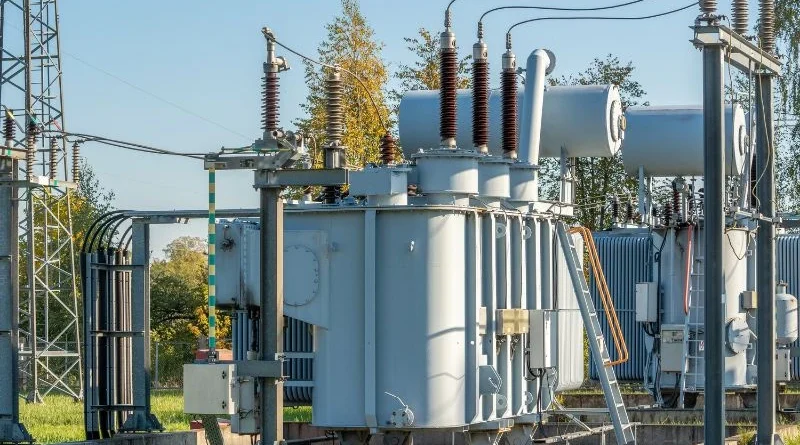
Dry-type transformers have become an integral part of modern power distribution systems and have revolutionized the way electricity is transmitted and distributed. Thanks to their advanced technology and numerous advantages, these transformers have proven to be the preferred choice for various industrial, commercial and residential applications. In this article, we explore the world of dry transformers and examine their functionality, benefits, and importance to electrical power.
The term “dry-type transformer” refers to a transformer that does not require liquid or oil for cooling and insulation. Instead, these transformers use air as a cooling medium, making them safer, more environmentally friendly and easier to maintain than their oil-filled counterparts. This innovative design eliminates the risk of oil leaks and spills, ensuring a higher level of safety and reducing environmental impact.
One of the main advantages of dry-type transformers is their versatility. They can be used in a variety of applications, from small residential units to large industrial complexes. Their compact size and lightweight design make them easy to install and transport, while their excellent insulation properties ensure efficient and reliable operation. Additionally, dry-type transformers are known for their excellent thermal performance, allowing them to withstand high temperatures without compromising functionality.
In addition to their practical benefits, dry transformers offer significant cost savings over time. Your maintenance requirements are minimal, resulting in lower operating costs and less downtime. Furthermore, their long useful life and high efficiency contribute to energy savings, making them a sustainable and economically viable choice.
As we delve deeper into dry-type transformers, we will explore their different types, applications, and the latest advancements in their design and technology. Join us on this journey and discover how dry transformers are shaping the future of power distribution, providing efficient, reliable power to meet the growing demands of our modern world.
What are the advantages of dry type transformers?
Dry-type transformers are a popular choice in many electrical applications due to their numerous advantages. These transformers use insulation systems that do not rely on liquids or oil for cooling, making them safer and more environmentally friendly. Let's explore some of the main advantages of dry-type transformers.
One of the main advantages of dry-type transformers is increased safety. As they do not require flammable liquids for cooling, the risk of fire or explosion is significantly lower. This makes them ideal for installations in sensitive areas such as hospitals, schools and commercial buildings.
Furthermore, dry-type transformers are highly efficient. They have low energy losses, so less energy is wasted during the transformation process. This not only helps reduce energy consumption, but also reduces operating costs over the life of the transformer.
Another advantage is its compact and lightweight design. Unlike oil-filled transformers, dry-type transformers are smaller and easier to transport and install. This makes them suitable for applications with limited space or where mobility is required.
Furthermore, dry-type transformers are practically maintenance-free. Unlike oil-filled transformers, which require regular oil checks and changes, dry-type transformers do not require this type of maintenance work. This results in reduced downtime and increased reliability.
Finally, dry-type transformers are environmentally friendly. As they do not contain oil or other dangerous substances, there is no risk of soil or water contamination in the event of a leak or failure. This makes them a sustainable choice for green building projects.
In summary, dry-type transformers offer several advantages, including greater safety, high efficiency, compact design, low maintenance and environmental friendliness. These properties make them a reliable and sustainable solution for various electrical applications.
How do dry type transformers work?
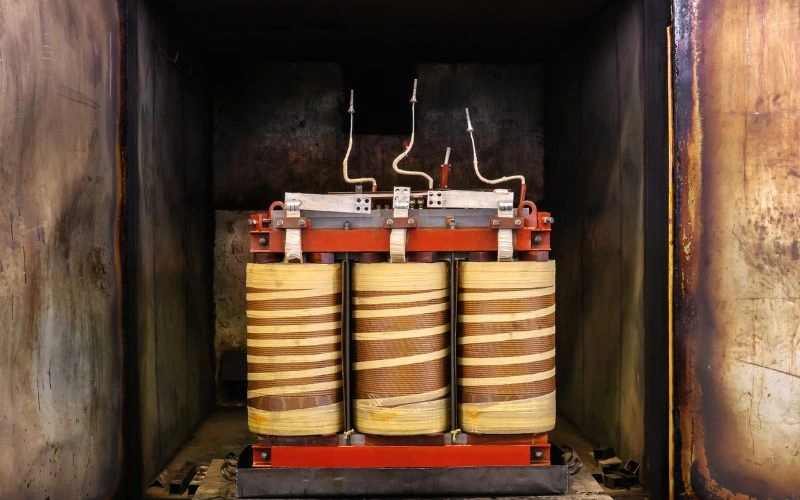
Dry-type transformers are an essential part of electrical systems and provide a safe and efficient way of distributing power. These transformers are widely used in commercial buildings, hospitals and industrial facilities due to their numerous advantages. By understanding how dry-type transformers work, we can better assess their importance in our daily lives.
At its core, a dry-type transformer consists of two separate windings, the primary and secondary, wound around a laminated iron core. The primary winding is connected to the power source while the secondary winding is connected to the load. The primary winding creates a magnetic field when alternating current (AC) flows through it. This magnetic field induces a voltage in the secondary winding, allowing current to be transferred from the primary circuit to the secondary.
One of the main characteristics of dry-type transformers is the absence of any liquid or oil for cooling. Instead, they rely on a combination of air circulation and insulation to dissipate heat. The windings are usually encapsulated in resin or varnish, providing insulation and protection against moisture and contaminants. This insulation allows the transformer to operate safely without fire or leakage.
Dry type transformers are known for their reliability and longevity. Compared to their oil counterparts, they require minimal maintenance, making them an economical choice for many applications. Additionally, its compact and lightweight design makes installation and transportation easy.
In summary, dry-type transformers play a crucial role in electrical systems, efficiently transferring energy from the primary circuit to the secondary circuit. Their insulation and cooling methods make them a safe and reliable choice for a variety of applications. By understanding how these transformers work, we can better assess their importance in our daily lives.
What are the applications of dry type transformers?
Dry-type transformers are versatile electrical devices with applications in various industries and environments. These transformers provide a safe and efficient solution for power distribution and are widely used in the commercial and industrial sectors.
One of the main applications of dry-type transformers is in commercial buildings. These transformers are often installed in office buildings, shopping malls, and hotels to provide reliable power for lighting, air conditioning, and other electrical equipment. Their compact size and ability to operate silently make them an ideal choice for such applications.
Dry-type transformers are used in industry for various purposes. They are often used in factories to power machines and devices. These transformers are designed for high loads and harsh environmental conditions and are therefore suitable for demanding industrial applications.
Dry-type transformers are also commonly used in renewable energy systems. As the world increasingly shifts to sustainable energy sources, dry-type transformers connect renewable energy sources such as solar and wind energy to the electrical grid. These transformers guarantee efficient transmission and distribution of energy and allow the integration of renewable energy into existing infrastructure.
Another important application of dry-type transformers is data centers. These transformers provide clean, stable power to important devices such as servers and networking devices. Because dry-type transformers can operate without oil, there is no risk of fire, making them a safer option for data center environments.
In summary, dry-type transformers have many applications in commercial, industrial, renewable energy, and data center environments. Their versatility, efficiency and safety features make them an essential part of modern electrical systems.
What are the disadvantages of dry type transformers?
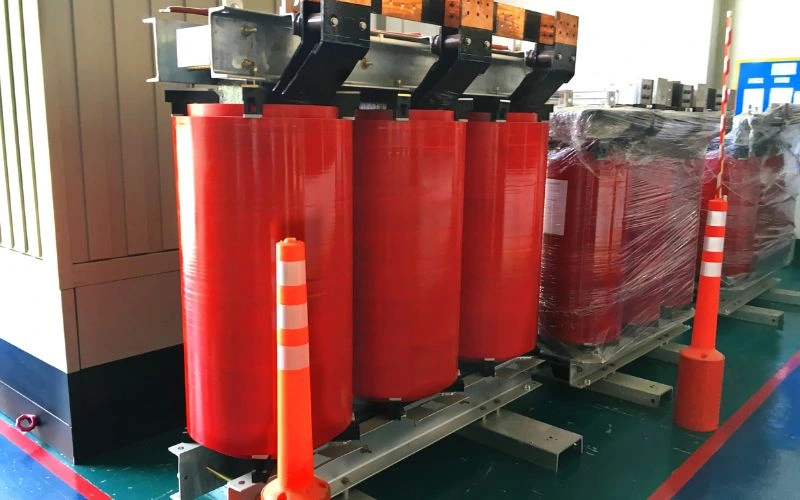
Despite the numerous advantages, dry-type transformers also have some disadvantages that must be taken into consideration. Understanding these disadvantages is important to make informed decisions when selecting transformer. In this article, we will look at some of the main disadvantages of dry-type transformers.
One of the main disadvantages of dry-type transformers is their limited power capacity. In contrast to oil-filled transformers, dry-type transformers have lower power ratings, which can be a significant limitation in certain applications. This limitation is mainly due to the insulating materials used in dry-type transformers, which have lower thermal conductivity and may not dissipate heat with the same efficiency.
Another disadvantage of dry-type transformers is their higher cost. Dry-type transformers are typically more expensive to manufacture and install than oil-filled transformers. This is mainly due to the special insulating materials and construction techniques required to ensure adequate cooling and safety. Additionally, maintenance and repair costs for dry-type transformers can also be higher.
A major disadvantage of dry-type transformers is their vulnerability to environmental conditions. Dry-type transformers are more sensitive to temperature fluctuations and may require additional cooling mechanisms in hot or humid environments. They are also more susceptible to damage from dust, moisture, and other contaminants that can affect their performance and lifespan.
Additionally, dry-type transformers tend to produce more noise than oil-based transformers. This can be a problem in noise-sensitive environments such as residential areas or office buildings. The noise is mainly caused by the airflow required for cooling, and although efforts have been made to reduce this noise, it remains a disadvantage of dry-type transformers.
In summary, although dry-type transformers offer several advantages, it is important to consider their disadvantages. These include limited power capacity, higher cost, susceptibility to environmental conditions, and audible noise. By understanding these drawbacks, individuals and organizations can make informed decisions about using dry-type transformers in a variety of applications.
What different types of dry transformers are there?
Dry-type transformers are an important component in electrical systems and ensure efficient and safe power distribution. These transformers are designed to operate without liquid cooling, making them ideal for indoor applications where environmental and safety considerations are of paramount importance. In this article, we will explore the different types of dry transformers commonly used in various industries.
One of the most common dry-type transformers is the cast resin transformer. These transformers are known for their excellent insulation properties and are often used in areas where fire protection plays an important role. Cast resin transformers are also highly resistant to moisture and can withstand harsh environmental conditions, making them suitable for outdoor installation.
Another type of dry-type transformer is the vacuum pressure impregnated (VPI) transformer. These transformers are manufactured by impregnating the windings with epoxy resin under vacuum conditions. VPI transformers are extremely reliable and offer excellent protection against moisture, dust and contaminants. They are often used in industrial applications where high levels of reliability and performance are required.
A third type of dry-type transformer is the encapsulated transformer. These transformers are manufactured by encapsulating the windings and core in epoxy resin, which provides excellent protection against humidity, dust and mechanical stress. Encapsulated transformers are compact and lightweight, making them suitable for installations where space is limited.
In summary, dry-type transformers come in different styles, each designed to meet specific application requirements. Whether a cast resin transformer, a vacuum pressure impregnated transformer or an encapsulated transformer: these devices offer efficient and safe power distribution without liquid cooling. Knowing the different types of dry transformers will help you choose the right transformer for your specific needs.
What safety aspects apply to dry-type transformers?
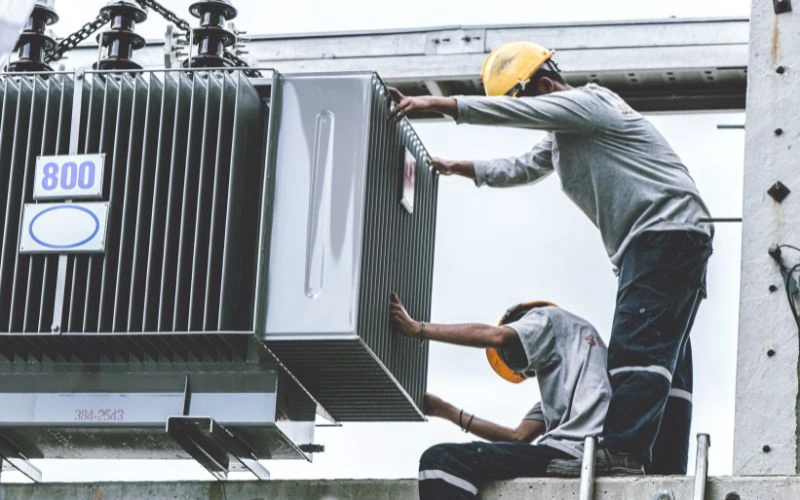
Dry-type transformers are widely used in various industries and commercial buildings due to their safety and efficiency. However, it is important to understand and consider the safety issues associated with these transformers to ensure smooth and safe operation. Here we will discuss some important safety aspects for dry type transformers.
Firstly, it is important to install dry-type transformers in a well-ventilated area. These transformers generate heat during operation, and adequate ventilation helps dissipate heat, preventing overheating and potential fire hazards. Additionally, installation must comply with local electrical codes and regulations to ensure proper grounding and electrical safety.
Regular maintenance is another important aspect of safety. Inspections should be carried out regularly to look for signs of damage, loose connections or deterioration of insulation. Any problems identified must be resolved immediately to prevent further damage or accidents.
Furthermore, it is important to take appropriate safety measures when carrying out maintenance or repair work. This includes turning off the transformer, following lockout/tagout procedures, and wearing appropriate personal protective equipment (PPE) to protect workers from electrical hazards.
Fire protection is also a critical aspect of dry-type transformers. It is recommended to have fire extinguishing systems, such as fire extinguishers or automatic sprinklers, close to transformers. These systems must be tested and maintained regularly to ensure they are effective in the event of a fire.
In summary, understanding and implementing dry-type transformer safety considerations is critical to ensuring the well-being of personnel and the protection of property. By following proper installation procedures, regular maintenance, and adherence to safety protocols, the risks associated with these transformers can be minimized, resulting in a safer work environment.
What are the maintenance requirements for dry-type transformers?
Dry-type transformers are an essential part of electrical systems and ensure reliable and efficient power distribution. To ensure optimal performance and longevity, regular maintenance is essential. By following proper maintenance procedures, you can avoid potential failures and extend the life of your dry-type transformers.
One of the most important maintenance requirements for dry-type transformers is regular inspection. Inspect the transformer for signs of damage such as cracks, corrosion, or loose connections. Pay special attention to the cooling system and make sure it is clean and free of obstructions. Periodically inspect the insulation system for signs of wear, as this is a critical component for the safe operation of the transformer.
Cleaning is another important aspect of dry-type transformer maintenance. Accumulation of dust and dirt can affect transformer performance and increase the risk of overheating. Regularly clean external surfaces and refrigeration openings to prevent blockages. Remove debris from the cooling fins using a soft brush or compressed air and ensure adequate airflow.
In addition to inspection and cleaning, it is important to monitor the transformer temperature. Excessive heat can cause insulation damage and other problems. Install temperature sensors and check temperature readings regularly. If the temperature exceeds recommended limits, take immediate action to correct the problem.
Furthermore, regular testing and analysis of the electrical parameters of the transformer is required. This includes measuring insulation resistance, performing dielectric strength tests and analyzing moisture content. These tests help identify potential problems and take corrective action in a timely manner.
By adhering to these maintenance requirements, you can ensure the reliable and efficient operation of your dry-type transformers. Regular inspections, cleaning, temperature monitoring and testing are essential to prevent failures and maximize the life of these critical electrical components. Follow the manufacturer's guidelines and seek professional help to ensure proper maintenance practices.
What environmental benefits do dry transformers offer?
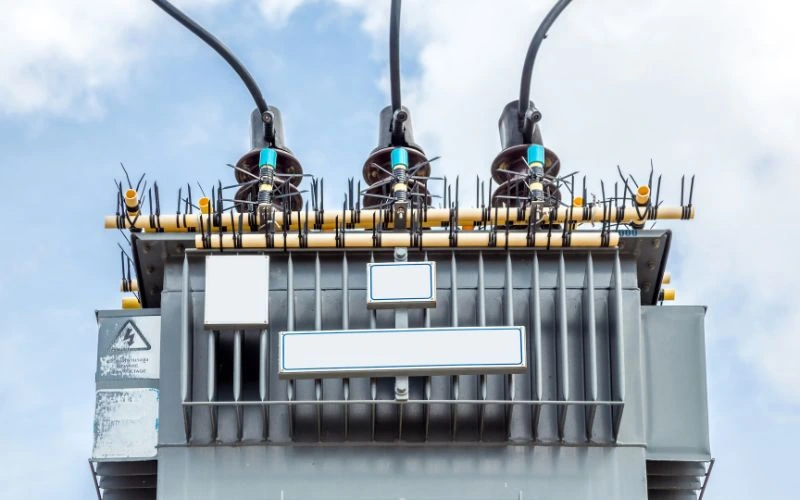
Dry-type transformers are becoming increasingly popular due to their numerous environmental benefits. These transformers use air instead of oil as a cooling medium, providing a more environmentally friendly solution for power distribution systems. In this article, we look at the environmental benefits of dry transformers and why they are a sustainable choice for the future.
One of the main advantages of dry-type transformers is the lower risk of environmental pollution. Unlike their oil-filled counterparts, dry-type transformers do not pose a risk of oil leaks or spills. This eliminates the risk of soil and groundwater contamination, protects the environment and ensures the safety of surrounding ecosystems.
Furthermore, dry-type transformers are more energy efficient compared to oil-filled transformers. They have lower energy losses, which means less energy is wasted during the conversion and distribution process. This not only reduces greenhouse gas emissions, but also results in significant cost savings for businesses and industry.
Furthermore, dry-type transformers have a longer useful life, which reduces waste generation. When properly maintained, these transformers can last several decades, minimizing the need for frequent replacements. This not only reduces the need for raw materials, but also reduces the amount of waste that ends up in landfills.
Another environmental advantage of dry-type transformers is their ability to operate in different climates. They are designed to withstand extreme temperatures and humidity, making them suitable for many locations around the world. This versatility reduces the need for additional cooling or heating systems, thus reducing energy consumption and environmental impact.
In summary, dry-type transformers offer several environmental benefits that make them a sustainable choice for power distribution systems. Its lower risk of pollution, energy efficiency, greater longevity and ability to work in different climates contribute to a greener and more environmentally friendly future. By using dry transformers we can minimize our environmental impact and work towards a more sustainable future.
Finally, the article on dry transformers provided a comprehensive overview of this important topic. We examine various aspects of dry-type transformers, including their advantages, operating principles, applications, disadvantages, types, safety aspects, maintenance requirements, and environmental benefits.
One of the main conclusions of this post is the numerous benefits of dry-type transformers. They are known for their safety as they eliminate the risk of oil leaks and fire. Additionally, they are more environmentally friendly compared to their oil-filled counterparts. These transformers also require less maintenance and are ideal for indoor installations.
We also discuss the operating principles of dry-type transformers, which use air as a cooling medium. This ensures efficient heat dissipation and prevents overheating. Additionally, we look at the diverse applications of dry transformers, from commercial buildings and hospitals to renewable energy projects.
However, it should be noted that dry-type transformers also have disadvantages. They are generally larger and heavier than oil-filled transformers, which can cause problems during installation and transportation. Furthermore, they have a lower overload capacity and may require additional cooling mechanisms in certain situations.
Looking ahead, several future developments and trends could impact the dry transformer industry. With the increasing focus on sustainability and energy efficiency, we can expect more advances in the design and efficiency of these transformers. Furthermore, the integration of digital technologies and smart grid systems can improve the monitoring and control capabilities of dry-type transformers.
In summary, dry-type transformers are crucial in various industries and applications. They offer numerous advantages in terms of safety, efficiency and environmental friendliness. As a reader, it is important to consider these factors when selecting a transformer for your specific needs. We hope this post has provided you with valuable information and practical tips.
Thank you for taking the time to read this post. We invite you to leave comments or feedback below. Your contribution is very welcome.

